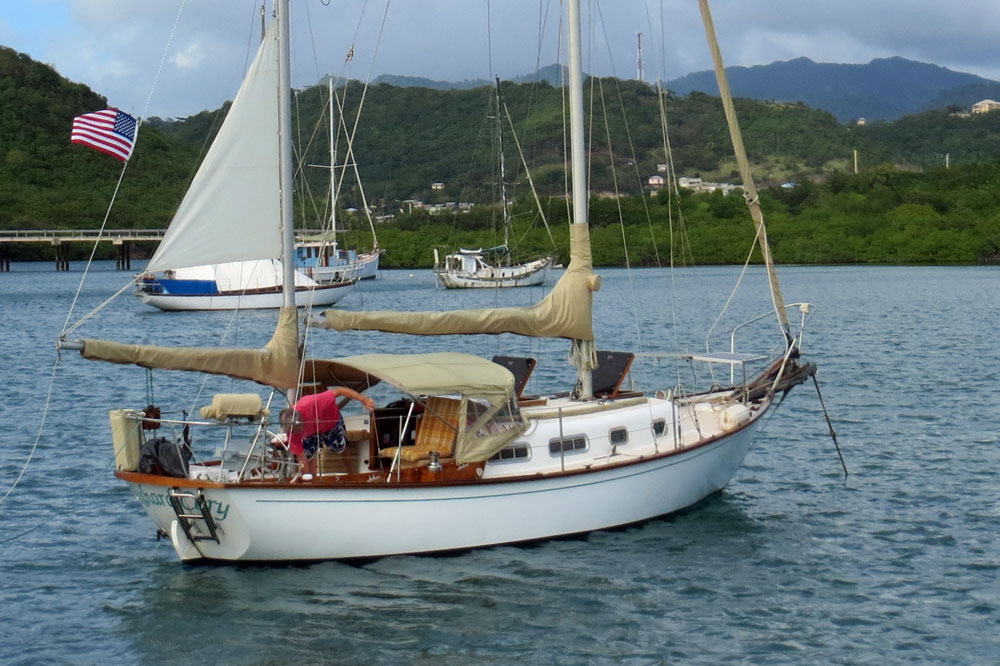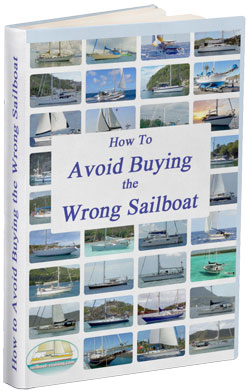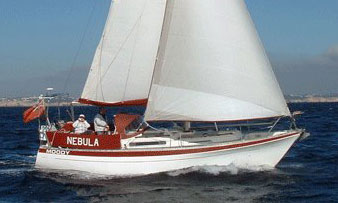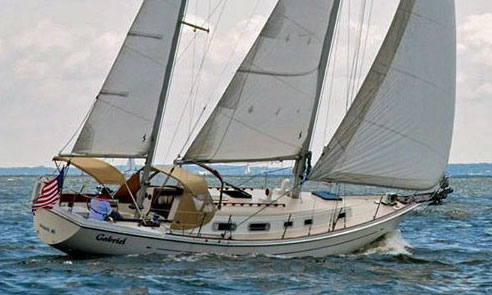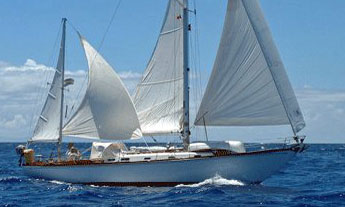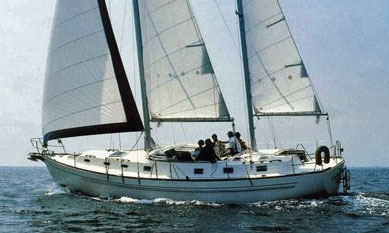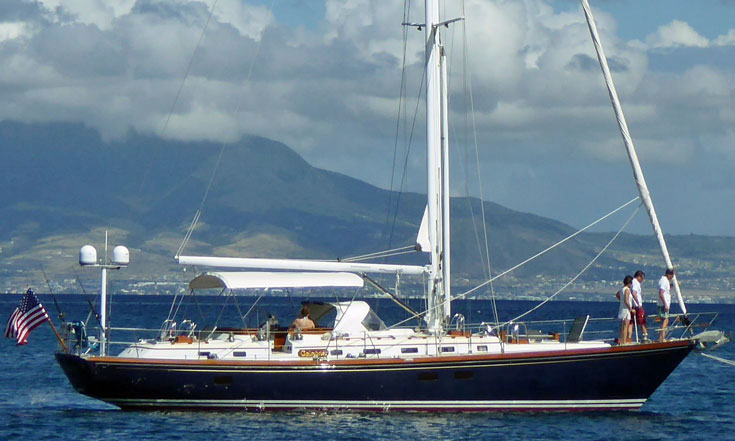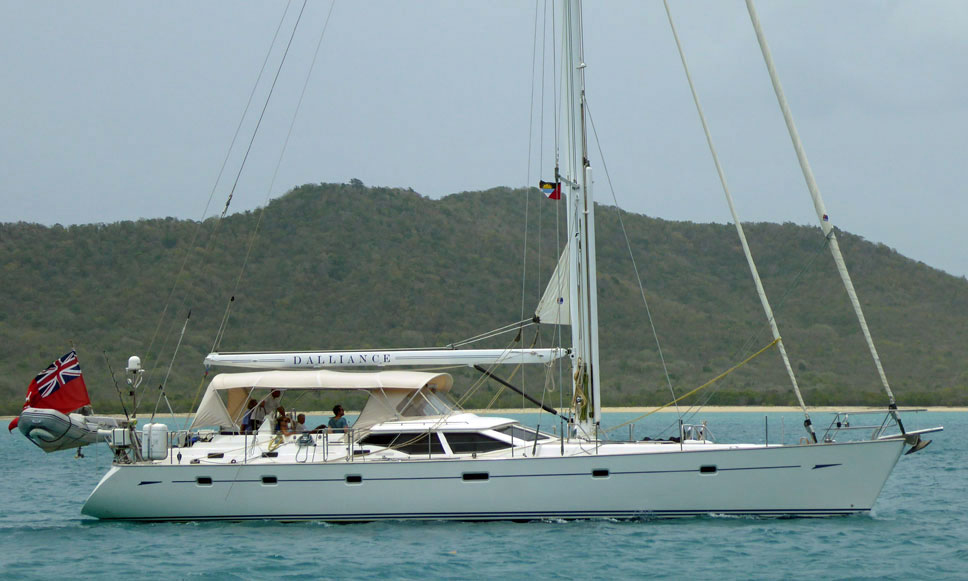- Home
- Cruising Yachts 30' to 35'
- Allied Seawind
The Allied Seawind Sailboat
The Allied Seawind 30, a long-keeled ketch, was designed by Thomas Gilmer and built in the USA by the Allied Boat Company Inc throughout the years 1962 to 1982.
Published Specification for the Allied Seawind 30
Keel & Rudder Configuration: Long keel with transom hung rudder
Hull Material: Fiberglass
Length Overall*: 30'6" (9.30 metres)
Waterline Length*: 24'0" (7.32 metres)
Beam*: 9'3" (2.82 metres)
Draft*: 4'2" (1.28 metres)
Rig Type: Masthead Ketch
Displacement*: 12,000 pounds (5,443 kg)
Ballast*: 4,200 pounds (1,905 kg)
Sail Area*: 425 ft² (39.5 m²)
Water Tank Capacity: 12 gallons (45 litres)
Fuel Tank Capacity: 12 gallons (45 litres)
Hull Speed: 6.70 knots
Designer: Thomas Gillmer
Builder: Allied Boat Company Inc. (USA)
Year First Built: 1962
Year Last Built: 1982
Number Built: 161 (This figure is for the original Seawind, not including the Seawind II)
* Used to derive the design ratios referred to later in this article - here's how they're calculated...
Design Options, Alternatives & Later Versions
Design Options
Rig Type: The original Allied Seawind was primarily built as a ketch. However, the later Seawind II was available in a ketch, cutter, and occasionally sloop rig. Some owners have also modified their ketch rigs to sloops or cutters.
Deep or Shallow Draft: The Allied Seawind generally features a long keel with a fixed draft (around 4'2" to 4'6", or 1.28 to 1.37 metres, depending on the specific model/version). There weren't typically deep or shallow draft options in the way modern boats offer different keel configurations. The long keel itself is a deep, traditional keel.
Interior Layouts: While specific details on multiple factory interior layouts for the original Seawind are not extensively documented, boat interiors of that era often had some customisation or minor variations. Owners also frequently undertake refits. Common features include a V-berth forward, settees in the main salon (sometimes convertible to berths), a galley to port, and a navigation station to starboard, often with a quarter berth.
Alternatives & Later Versions
The most notable later version was the Allied Seawind II.
The essential differences between the original Allied Seawind (often referred to as the Seawind 30) and the Seawind II were:
- Length Overall (LOA): The Seawind II was approximately a foot longer (around 31'7" / 9.63 metres) compared to the original Seawind's 30'6" (9.30 metres).
- Beam: The Seawind II was significantly beamier, at 10'5" (3.18 metres) compared to the original's 9'3" (2.82 metres). This increased beam generally translates to more interior volume and potentially more initial stability.
- Displacement: The Seawind II was heavier, displacing around 14,900 lbs (6,759 kg) compared to the original's 12,000 lbs (5,443 kg).
- Ballast: Correspondingly, the Seawind II carried more ballast, at 5,800 lbs (2,631 kg) versus the original's 4,200 lbs (1,905 kg).
- Rig Type: While the original was primarily a ketch, the Seawind II was commonly built as both a ketch and a cutter, and sometimes a sloop.
- Interior Space: The increased length and beam of the Seawind II provided for a more substantial and comfortable interior, often with more headroom (e.g., 6'2").
Sail Areas & Rig Dimensions
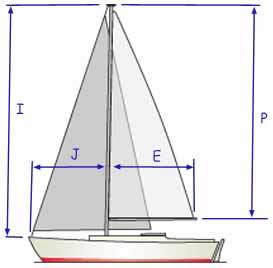 Sail Areas & Rig Dimensions
Sail Areas & Rig DimensionsSail Areas (Original Seawind 30, Ketch Rig)
- Sail Area of Foretriangle (100%): 217.93 ft² (20.25 m²)
- Sail Area of Mainsail: 206.90 ft² (19.22 m²)
- Sail Area of Mizzen (for ketch rig): 85.76 ft² (7.98 m²)
Rig Dimensions (Original Seawind 30, Ketch Rig)
- I (foretriangle height): 35'7" (10.84 metres)
- J (foretriangle base): 12'3" (3.73 metres)
- P (mainsail luff length): 31'10" (9.70 metres)
- E (mainsail foot length): 13'0" (3.96 metres)
- PY (mizzen luff length): 18'2" (5.54 metres)
- EY (mizzen foot length): 8'6" (2.59 metres)
Published Design Ratios (Original Seawind 30, Ketch Rig)
The Key Performance Indicators (KPIs)
The key design ratios for the Allied Seawind 30 are:
- Sail Area/Displacement Ratio: 15.38
- Ballast/Displacement Ratio: 34.0%
- Displacement/Length Ratio: 387.52
- Comfort Ratio: 36.91
- Capsize Screening Formula: 1.62
Theoretical Sailing Characteristics
Based on the published design ratios, the Allied Seawind (original 30-foot ketch) exhibits the following theoretical sailing characteristics:
- Sail Area/Displacement Ratio (15.38): This ratio is just below the common threshold of 16 for reasonably good performance, and well below 20 for high performance. This suggests the Allied Seawind is under-powered in light wind conditions. It will likely require a stiff breeze to get her moving well. In lighter air, owners may find themselves relying on motor-sailing to maintain progress. This is characteristic of many heavy, full-keel cruising boats designed for offshore capability rather than speed.
- Ballast/Displacement Ratio (34.0%): A ratio under 40% indicates a boat that is less stiff and less powerful in resisting heel. Combined with its long keel, this means the Allied Seawind is likely to heel more readily in a breeze. To maintain an efficient sail plan and comfortable motion, it would benefit from being reefed early when the wind picks up. This doesn't necessarily mean it's unstable, but rather that it prioritises a more gentle motion over extreme stiffness.
- Displacement/Length Ratio (387.52): A D/L ratio over 350 places the Allied Seawind firmly in the ultra-heavy displacement category. This indicates a very stoutly built boat with significant internal volume. Such a design is known for its ability to carry heavy loads (provisions, water, gear) with minimal impact on performance. While not a fast boat, its heavy displacement makes it sea-kindly and comfortable in a seaway, with a stable and predictable motion. This characteristic makes it well-suited for long-distance offshore cruising.
- Comfort Ratio (36.91): Ted Brewer's Comfort Ratio between 30 and 40 signifies a moderate offshore cruising boat with a predictable and acceptable motion in a seaway for most seasoned sailors. This aligns with its heavy displacement, suggesting a comfortable ride even in rough conditions, reducing the likelihood of crew fatigue and seasickness.
- Capsize Screening Formula (1.62): A Capsize Screening Formula (CSF) of less than 2.0 indicates that the Allied Seawind is well-suited for ocean passages and generally considered safer for offshore conditions than boats with a higher CSF. This ratio primarily assesses the boat's initial stability and resistance to capsize in breaking waves.
In summary, the design ratios paint a picture of the Allied Seawind as a robust, comfortable, and very sea-kindly offshore cruising sailboat. It is not designed for speed, particularly in light airs, but excels in its ability to carry loads, provide a stable motion in rough seas, and offer a high degree of safety for long-distance voyages. Its heavy displacement and lower ballast ratio suggest it will benefit from prudent reefing in stronger winds.
But the Design Ratios Don't Tell the Whole Story...
While design ratios provide valuable insights into a sailboat's theoretical characteristics, they have several significant limitations:
Simplification of Complex Hydrodynamics: Sailboat performance is a result of incredibly complex interactions between the hull, keel, rudder, rig, sails, and environmental factors (wind, waves, currents). Ratios are single numbers that attempt to summarise these multifaceted relationships, inherently leading to simplifications. They don't account for nuanced hull shapes, keel foils, rudder design, or subtle differences in weight distribution.
Does Not Account for Specific Design Nuances:
- Keel and Rudder Shape: A long keel boat might have a high D/L, but the specific foil section and aspect ratio of the keel and rudder can significantly affect its turning radius, upwind performance, and ability to track a course. Ratios don't capture this.
- Rig Configuration: While SA/D gives an overall power indication, it doesn't differentiate between a sloop, cutter, or ketch rig. Each has different advantages in terms of sail handling, balance, and performance in various conditions.
- Sail Plan Efficiency: The actual shape, trim, and efficiency of the sails, as well as the quality of the rigging, can dramatically impact performance but are not captured by a simple SA/D ratio.
Static vs. Dynamic Performance: Ratios are largely static measurements based on the boat's design parameters. They don't predict how a boat will perform dynamically in different sea states, wind strengths, or points of sail. For example, a heavy boat with a high D/L might be comfortable in a chop but could be slow to accelerate or suffer in light air due to its wetted surface.
Loading and Trim Sensitivity: While the D/L ratio indicates a boat's tolerance for load, it doesn't fully predict how a boat's performance changes with varying loads and trim. An improperly loaded boat can perform far worse than its ratios suggest. The "standard displacement" used for calculations might not reflect a real-world cruising load.
Subjectivity of "Comfort": The Comfort Ratio, while useful, is a formulaic interpretation of motion. What one sailor considers comfortable, another might find too lively or too slow. It doesn't account for factors like cockpit ergonomics, interior volume, or ventilation, which also contribute to perceived comfort.
Does Not Account for Build Quality and Maintenance: The actual performance and seaworthiness of a boat in the real world are heavily influenced by its build quality, the condition of its systems, and ongoing maintenance. Ratios only reflect the design.
Ignores Crew Skill and Experience: The performance of any sailboat is significantly affected by the skill and experience of its crew, particularly in sail trim, helming, and weather routing. Ratios cannot account for this human factor.
Limited for Multihulls: Some ratios, particularly the Capsize Screening Formula, are primarily designed for monohulls and are not directly applicable or reliable for multihulls (catamarans, trimarans).
In essence, design ratios are excellent starting points for understanding a boat's general design philosophy and theoretical capabilities. However, they should always be considered alongside other factors such as hull shape, rig design, build quality, and, ideally, direct experience with the specific boat or similar designs. They provide a quantitative snapshot but lack the qualitative nuances of real-world sailing.
More Specs & Key Performance Indicators for Popular Cruising Boats
Recent Articles
-
Yacht Clearance in the Caribbean: A Sailor's Guide
Nov 25, 25 07:13 AM
Navigating yacht clearance in the Caribbean is essential for a smooth sailing trip. This guide, written by an experienced sailor, explains the required papers, procedures & tips for a hassle-free expe… -
Beneteau Oceanis 36CC: Specs, Ratios & Cruising Suitability
Nov 25, 25 06:08 AM
Detailed analysis of the Beneteau Oceanis 36CC centre cockpit sailboat. Includes design ratios, full specifications, and practical assessment of its suitability for experienced offshore and liveaboard… -
Essential Boat Toilet Maintenance & Systems: A Sailor’s Guide
Nov 24, 25 01:17 PM
Master boat toilet maintenance, from manual sea heads to 12v electric systems. Get an experienced offshore sailor’s guide on avoiding clogs, leaks, & bad smells.
